 | | Kazuko Ute "Ute-Sensei" 1927-2011 |
PLA Conference in Philadelphia PA March14-16
Table Top 13
Please drop by!
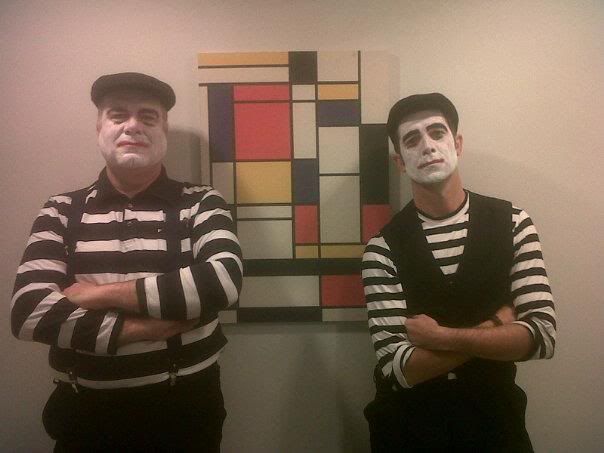 | |
The Henry Brothers: Kamishibai performers and ELT |
|
Kamishibai:
A Versatile Tool to Develop
Reading, Writing
and Oral Storytelling Skills | |
|
One of thirteen
Zodiac Postcards
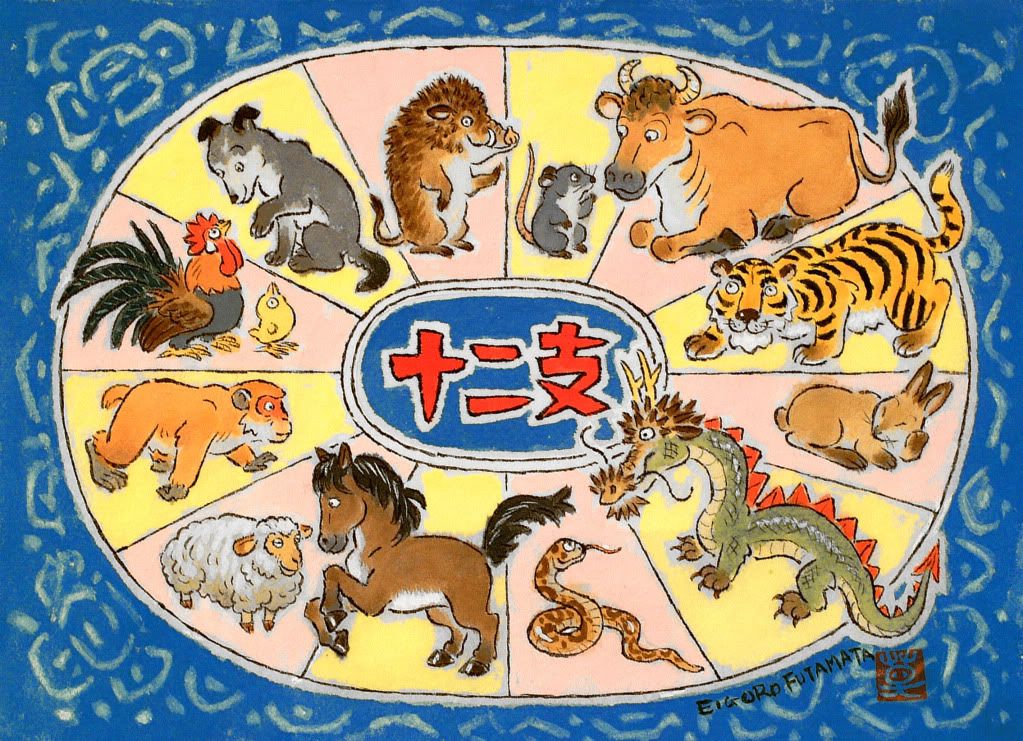 | | 12 Asian Zodiac Animals |
All kamishibai include a
Teacher's Guide
ClickTeacher's Guide
The Kamishibai Classroom
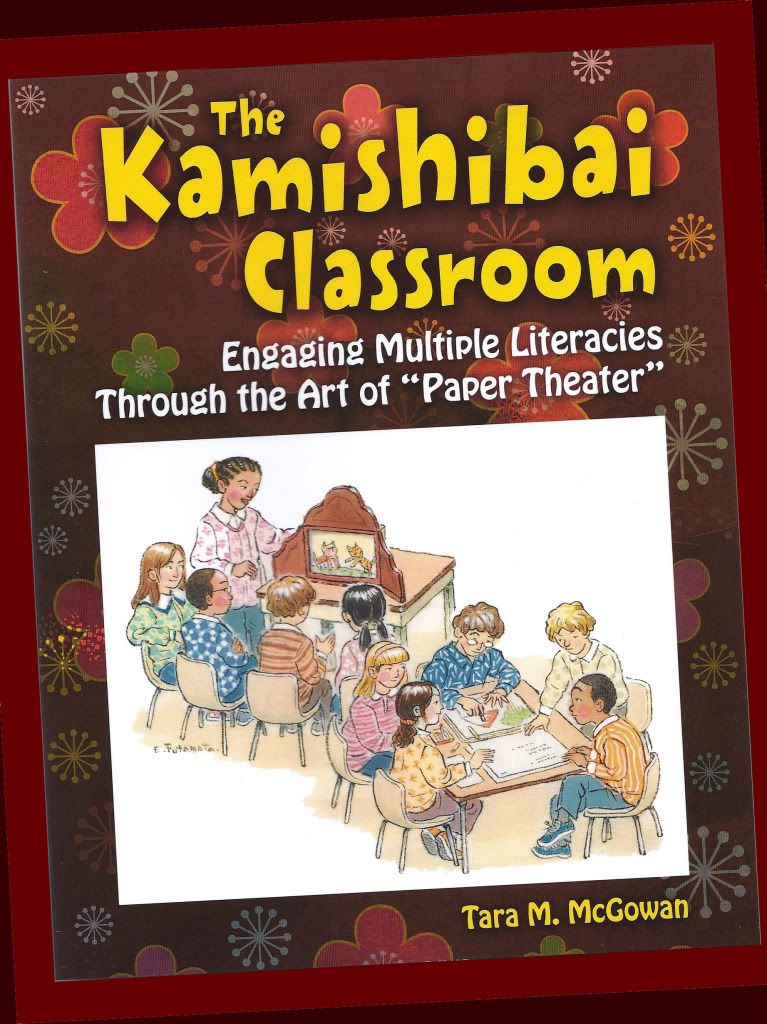 | | The Kamishibai Classroom: Engaging Multiple Literacies Through the art of "Paper Theater" by Tara McGowan |
Caldecott Medalist
Allen Say
Remembers
Kamishibai
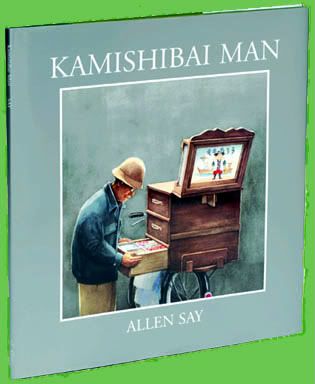 | |
Signed by the author |
For more information please go to our website!
 | | Jeffrey Dym's videos How to use kamishibai and Kamishibai in the classsroom |
|
 | | Kamishibai: How the Years Were Named |
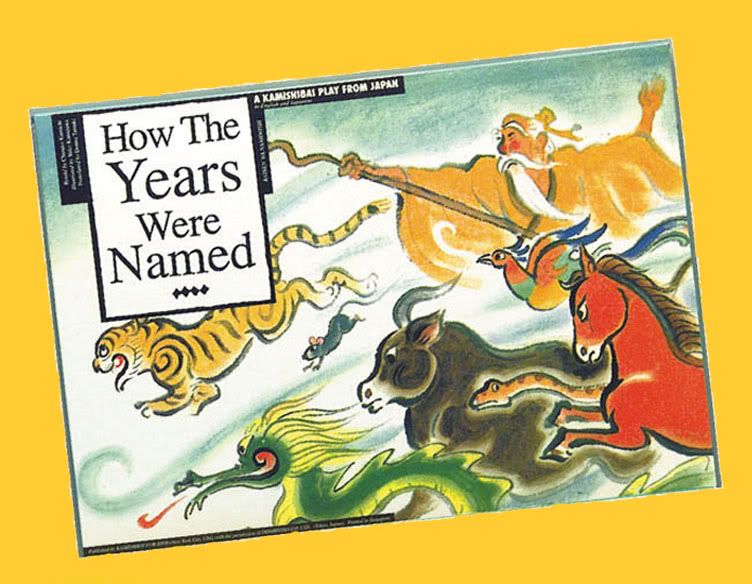 Manga Kamishibai by Eric Nash
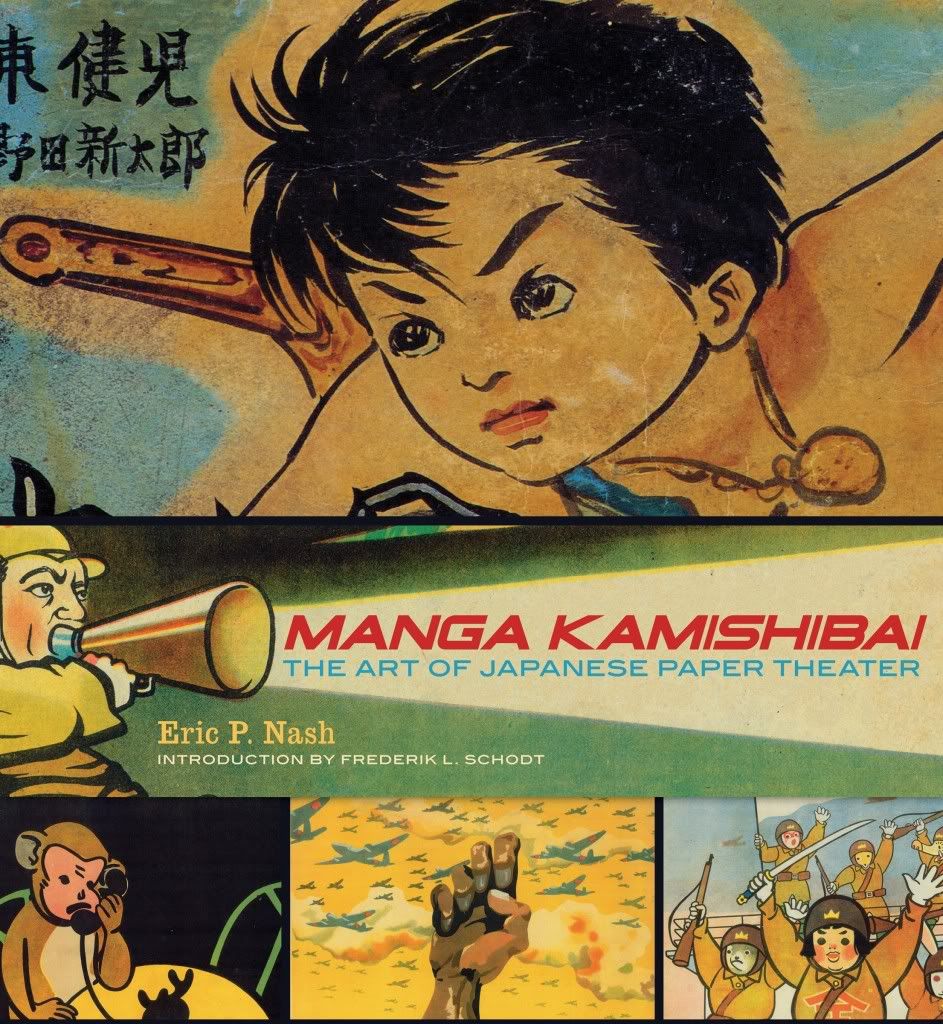 | | Signed by the author |
|
|
The Year Of the Dragon - 2012
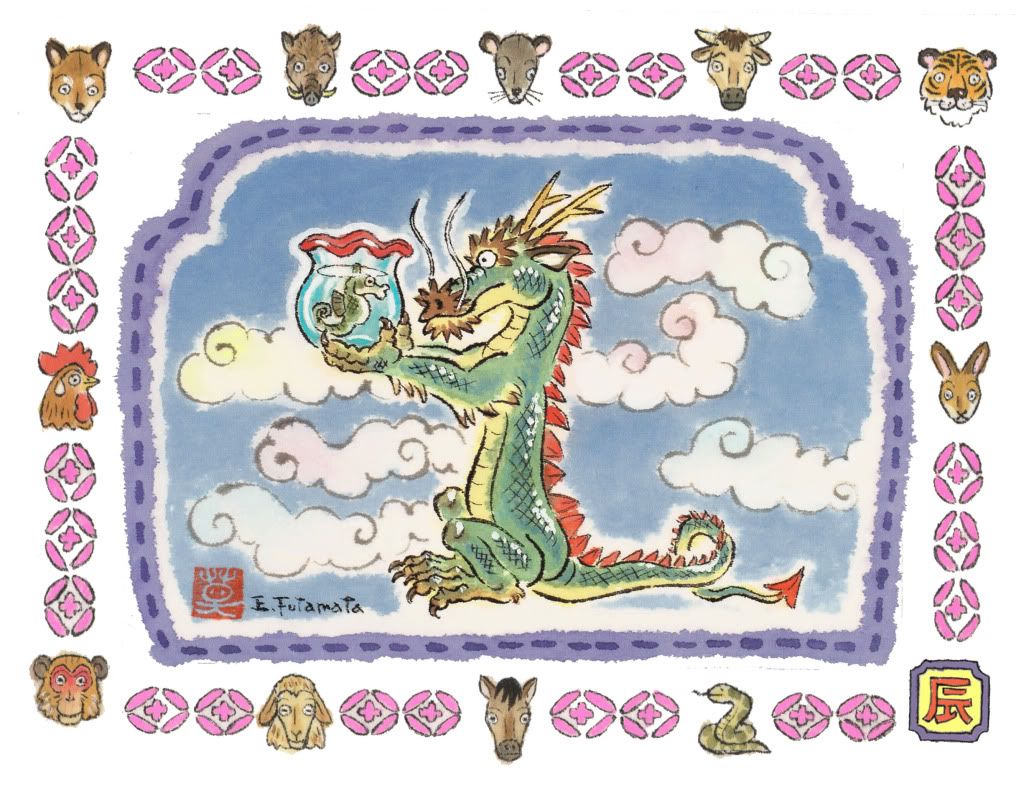 | | The Year of the Dragon Zodiac Card |
|
 | | Close-up of cloud dragon, Kenchō-ji Temple ceiling painting |
The Dragon is the fifth animal in the Asian zodiac, after the rabbit, and is the only mythical creature among the twelve. Its fearsome and fascinating appearance - the body of a serpent, claws of an eagle, antlers of a deer, whiskers and scales of a catfish (or carp?) and a dinosaur-like look - appeals to the imagination of both children and adults. It appears in several of our kamishibai selections. In the Bamboo Princess, one of the suitors is given the task of finding the five-colored jewel of the Dragon of the Sea; in Urashima Taro, the protagonist falls in love with the daughter of the Sea Dragon King and spends 300 years together with her in her father's palace under the sea. The dragon and tiger in How the Years Were Named vie to be first in the race of the animals, but both lose to the small but clever mouse. |
|
| |
Kamishibai: The Dragon's Tears |
|
|
Unlike the dragons of Middle-Eastern and European mythology,
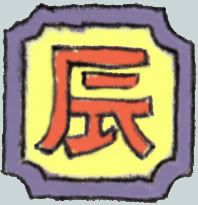 | | Chinese Character for Dragon |
the Asian dragon is a fearful but benevolent figure and is thought both to bring prosperity and good fortune and to ward off evil spirits - perhaps boding well for the year 2012. In China it was the symbol of the imperial family and in Japan has close associations with Buddhism. The names of many Japanese Buddhist temples include the Chinese character for dragon, and in temples of the Zen sect, a huge dragon is painted in black and white on the ceiling of the assembly hall, symbolizing a monk who has achieved enlightenment and possesses the freedom of a dragon living in the heavens.
Some Asian dragons reside in the heavens and some in the seas, the latter like those in the Bamboo Princess and Urashima Taro. But both types are closely associated with water - they occasionally have to be appeased when there is a drought or their images sometimes adorn roof tiles as a way to protect buildings from fire. Wherever dragons live, however, they have a dominating and lordly presence.
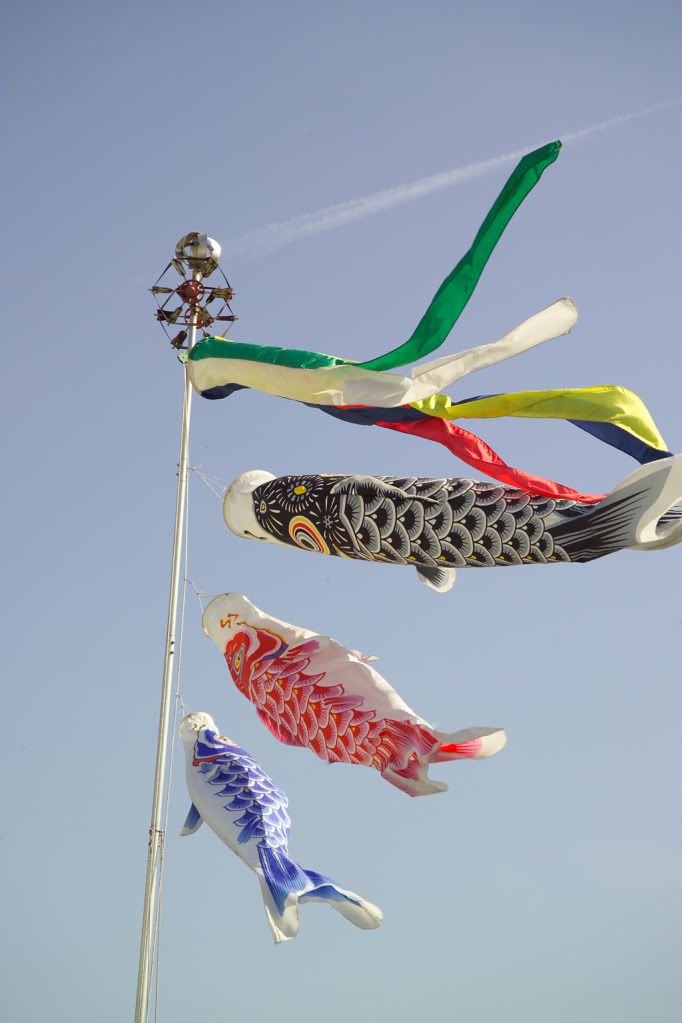 | | Koinobori: Carp Banners |
There is an interesting Chinese legend about a waterfall named Dragon Gate Falls (Ryumon no Taki, in Japanese). It is said that a carp who can swim against the current to the top of the falls will become a dragon. The Japanese expression touryuumon, which means "the first major hurdle on the road to success," refers to this "dragon gate." The carp banners displayed outside the homes of families with young boys on Boys' Day also speak to the Japanese admiration for those who struggle against the current to achieve a difficult goal-like the carp who desires to become a dragon.
|
FOR KAZUKO UTE
"UTE-SENSEI"
1927-2011
A REMEMBRANCE AND THANK YOU FROM MARGARET & DONNA

Ute-sensei performing "The Three Magic Charms"
Ute-sensei was one of the most generous, loving and remarkable people we have had the privilege of knowing. We first met her and her acolyte, Fumiko Araki (Bun-chan) in Tokyo in November, 1992. Kamishibai for Kids was just an idea then; we had sought their help in learning more about kamishibai in general and more specifically, their story recommendations. What we thought would be a short meeting of a couple of hours ended up lasting late into the night - and what a marvelous treat it was! Ute-sensei completely enthralled us with her amazing kamishibai performances; even if one did not understand Japanese, the storyline was clear. By the end of the evening we were inspired and even more committed to our plan of introducing kamishibai to American schoolchildren.
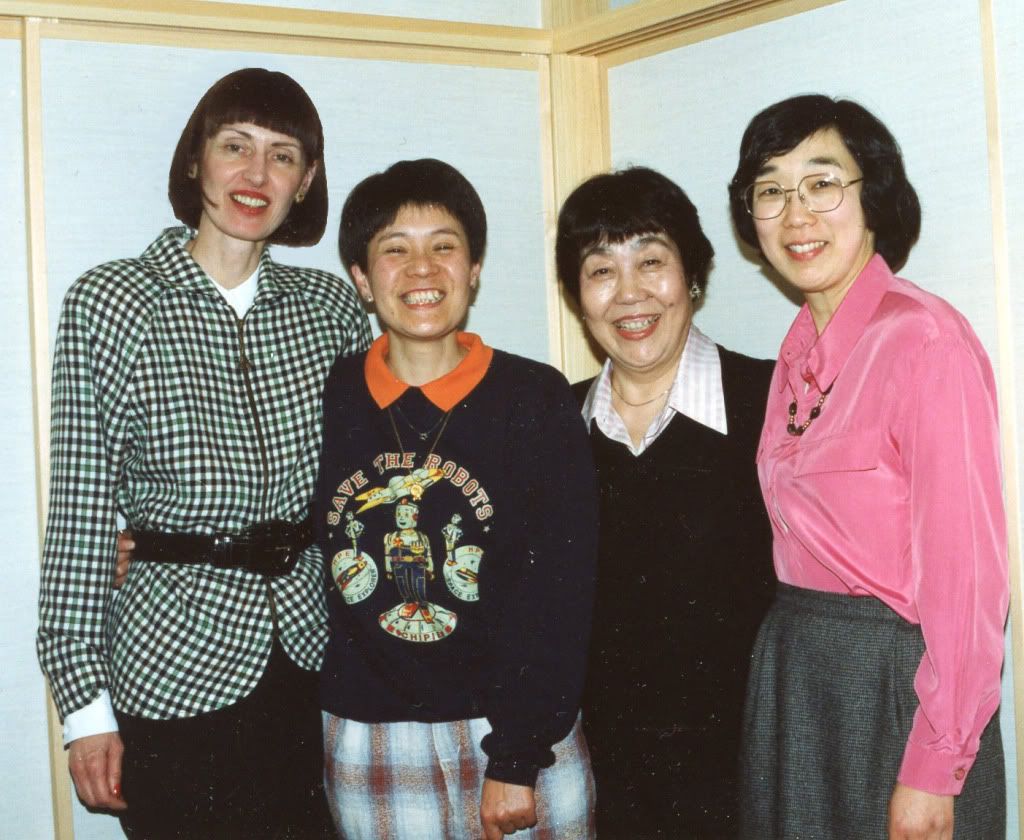 | | In Tokyo |
We would return to Tokyo at least once a year, sometimes more often. Each time we visited, we were warmly welcomed at the Tokyo Hyoshigi Kamishibai Group gathering, where kamishibai aficionados from all walks of life would gather to share and learn more about them. As we enjoyed delicious refreshments, two or three members would perform kamishibai and Ute-sensei would offer a gentle but helpful critique. Toward the end of the meeting, she would often perform newly published kamishibai, or perhaps one that she thought American children would enjoy. She was a role model for us all.
 | | Ute-sensei always helpful |
|
UTE-SENSEI PERFORMER EXTRAORDINAIRE
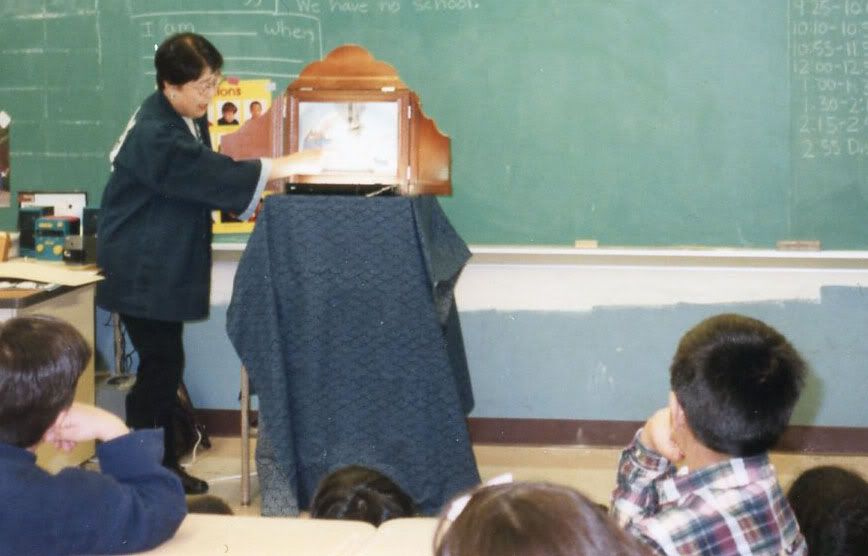 | | In New York City |
Ute-sensei was in demand all over Japan, not only as a kamishibai performer, but also as a lecturer at colleges and universities. We are thrilled that the one time she travelled outside of Japan, it was to visit New York City under a grant from the Japan Society. It was a short but productive trip, with several school visits and a workshop at the Japan Society. Ute-sensei spoke no English, but the varying colors of her voice and subtle nuances in her readings, in combination with the kamishibai illustrations, made a translation unnecessary. She had the ability to expand the tiny kamishibai stage into a theater filled with many actors, while her warmth and kindness filled the room.
Her energy was amazing and we thought that she would be with us forever. Sadly however, that could not to be. On November 17, Ute-sensei passed away from a stroke.
Ute-sensei was always there to encourage us and was our guiding light. As we live out the rest of our own lives, her laughter and encouragement will be missed, but her passionate and generous spirit will always be with us.
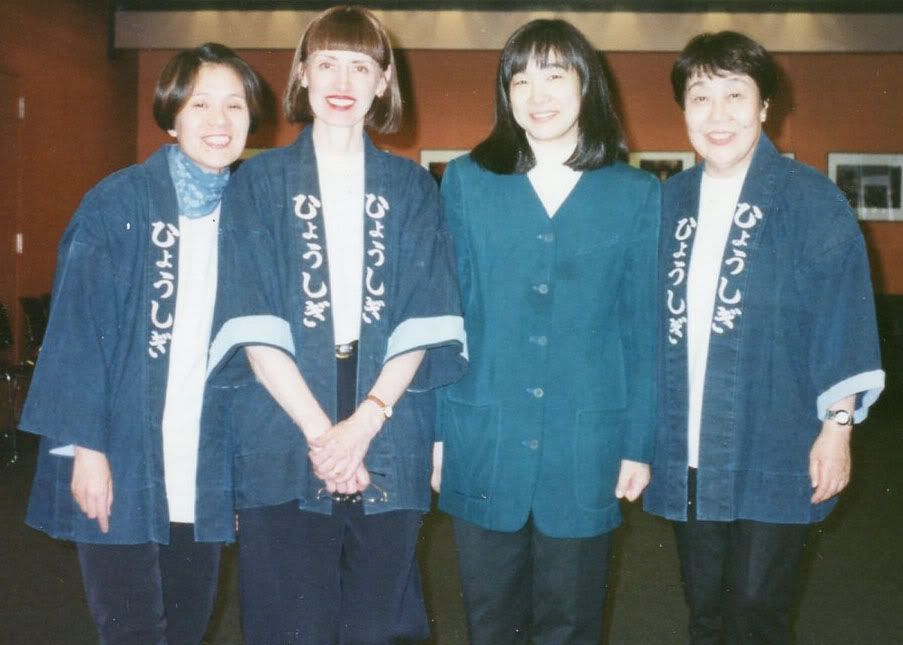 | | At the Japan Society, New York City |
|
|
A Special Message to Our Readers
from Our Good Friend, Tara McGowan
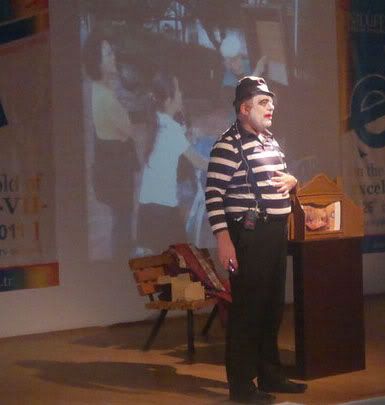 | | John at an ELT conference with his kamishibai stage |
We are pleased to present the next in our series of interviews with people from around the globe who are doing interesting and different things with kamishibai. In this newsletter, John Henry Moorcroft and Paul Henry Zarraga are both from the middle of England, John hailing from Birmingham in the West Midlands and Paul from Loughborough in the East. They have been working in ELT (English Language Teaching) for many years teaching in Turkey, Spain, Britain and the Middle East. They are currently marketing ELT materials for Cambridge University Press in Istanbul and making occasional appearances showing the lighter side of ELT under their middle names John Henry and Paul Henry--the Henry Brothers. They also have a blog called The Henry Brothers Jim Jam Slam, which looks at storytelling, poetry, drama and other ELT related curiosities:
To finish the interview with the Henry Brothers go to our website.
www.kamishibai.com/spotlight
Again, we would like to take this opportunity to invite you to be a part of our Global Kamishibai series. If you are doing new and exciting things with kamishibai and would like to contribute an interview, or if you know of someone you think we should contact for an interview (or even if you just have questions about kamishibai or the project) please email us at mcgowantara@gmail.com.
We look forward to hearing from you!
Tara McGowan, Margaret Eisenstadt, and Donna Tamaki
Tara McGowan is a doctoral candidate in the Language and Literacy in Education division of the University of Pennsylvania's Graduate School of Education. For more information about her research interests and work with kamishibai, see her website: www.taramcgowan.com.
|
|
|
|
|